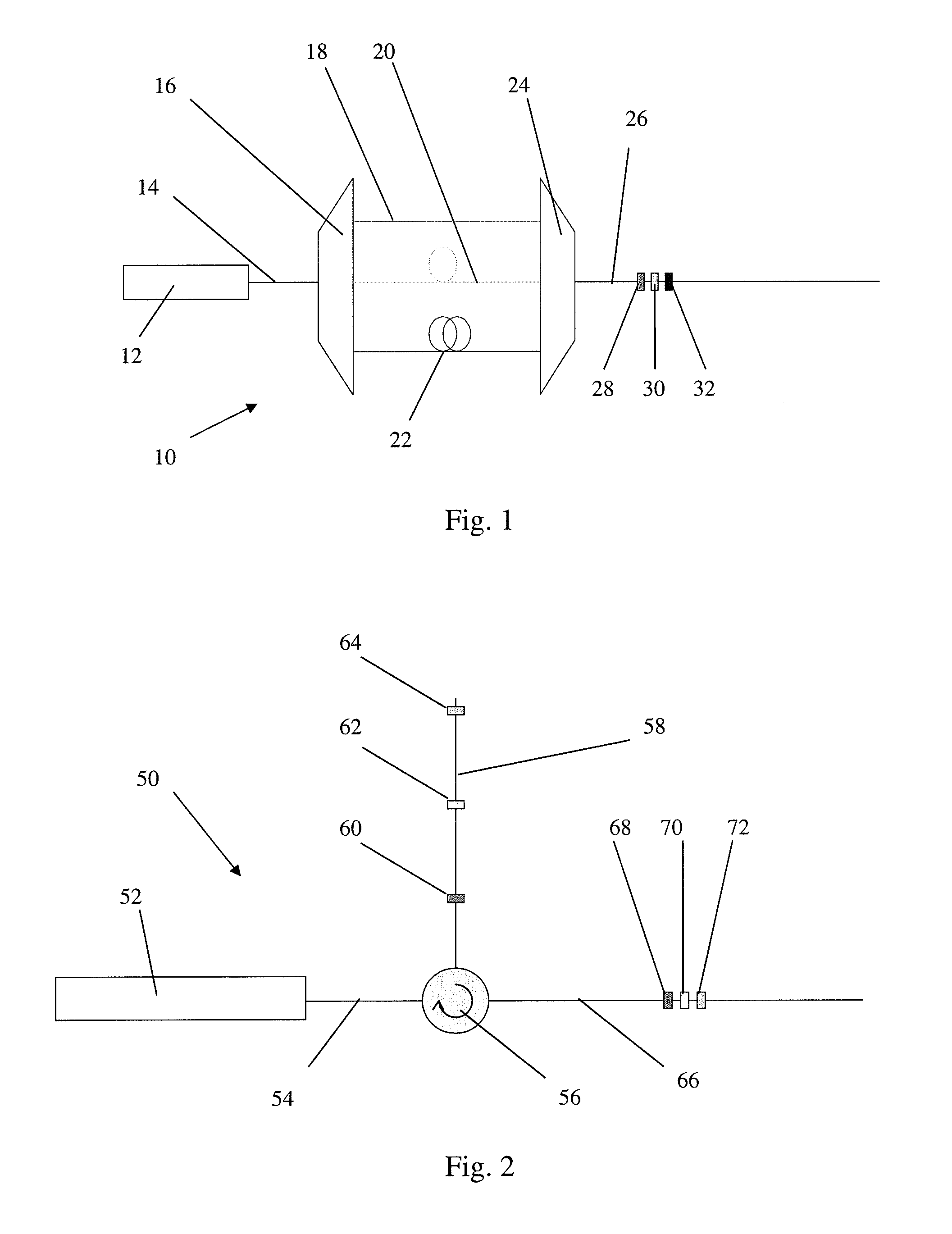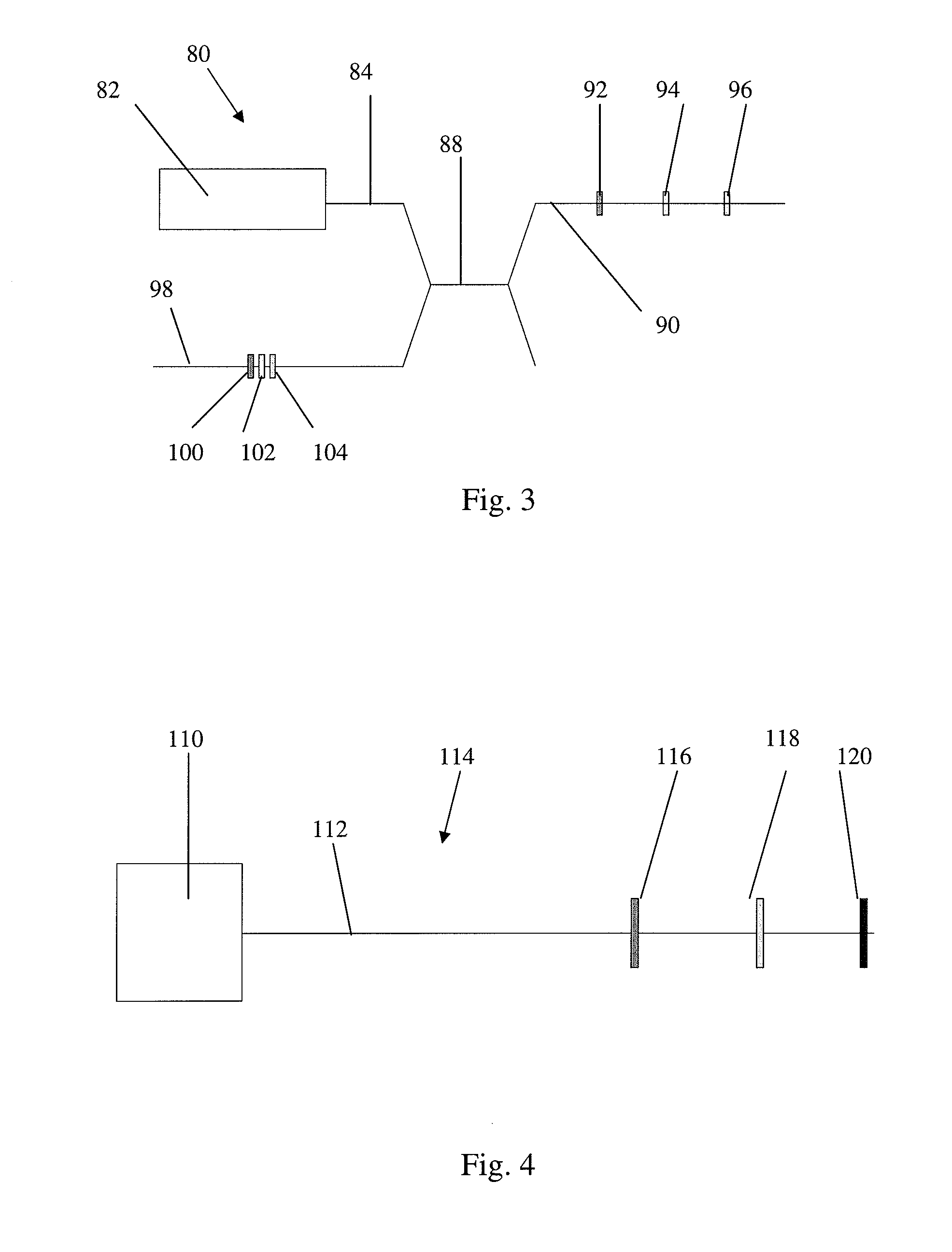Apparatus for interrogating fibre bragg gratings
a technology of fibre bragg grating and apparatus, which is applied in the direction of photometry, photometry using electric radiation detectors, instruments, etc., can solve the problems that the electronic system cannot cope with the signals returning from the spacing, and impose limitations on the construction of the sensor system
- Summary
- Abstract
- Description
- Claims
- Application Information
AI Technical Summary
Benefits of technology
Problems solved by technology
Method used
Image
Examples
Embodiment Construction
[0018]FIG. 1 shows apparatus for interrogating fibre Bragg gratings (FBGs) comprising a TDM (time-division multiplexing) interrogator 12 connected to a first end of a first optical fibre 14. The other end of the first optical fibre 14 is connected to a wavelength band splitter / combiner 16. The wavelength band splitter / combiner 16 is connected to one end of three delay coils 18, 20 and 22. The other end of the three delay coils 18, 20, 22 is connected to a wavelength band combiner / splitter 24, which in turn is connected to one end of a second optical fibre 26. The second optical fibre 26 comprises fibre Bragg gratings 28, 30, 32 closely spaced along its length. Each of the fibre Bragg gratings 28, 30, 32 has an operating range of resonant wavelengths in a different discrete wavelength band. Each of the wavelength band splitter / combiners 16, 24 is configured to direct light in the wavelength bands corresponding to each of the fibre Bragg gratings 28, 30, 32 into a respective delay coi...
PUM
| Property | Measurement | Unit |
|---|---|---|
| distance | aaaaa | aaaaa |
| distance | aaaaa | aaaaa |
| wavelengths | aaaaa | aaaaa |
Abstract
Description
Claims
Application Information
 Login to View More
Login to View More - R&D
- Intellectual Property
- Life Sciences
- Materials
- Tech Scout
- Unparalleled Data Quality
- Higher Quality Content
- 60% Fewer Hallucinations
Browse by: Latest US Patents, China's latest patents, Technical Efficacy Thesaurus, Application Domain, Technology Topic, Popular Technical Reports.
© 2025 PatSnap. All rights reserved.Legal|Privacy policy|Modern Slavery Act Transparency Statement|Sitemap|About US| Contact US: help@patsnap.com



